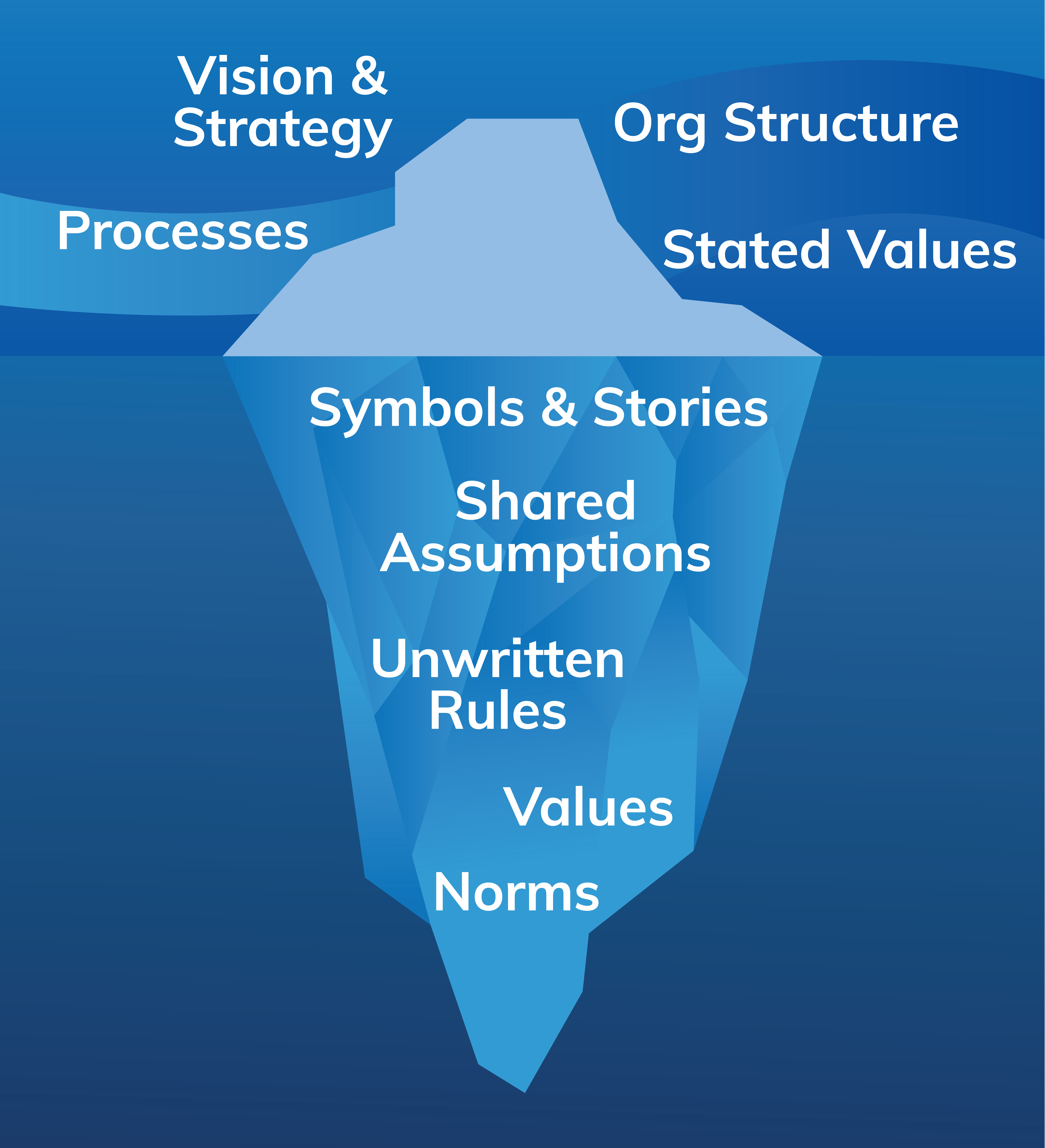A strong, positive safety culture results in reduced injuries and lost time by valuable resources, improved morale and productivity, and greater loyalty to the organization.
Safety culture and the desire to have a strong safety culture are often discussed, but what exactly is safety culture?
In basic terms, safety culture is the “preferred way things get done with regard to risks and hazards.” Safety culture is the product of both individual and group beliefs, perceptions, attitudes and values, as well as competencies and behaviors, that employees share regarding health and safety.
Visible Safety Culture is 15% of the Picture
Safety culture is more than the posters and slogans put up on the walls. It’s more than the policies and procedures established to manage safety. These things are the visible part of the “iceberg” in regard to safety culture - about 15% of what truly makes up a culture.
Invisible Safety Culture Makes Up the Other 85%
The remaining 85% of safety culture is “below the waterline.” This invisible safety culture is developed over time and consists of:

- Symbols and stories around how safety is valued compared to production and other priorities.
- Assumptions about safety shared across the organization, such as “Safety is important, but production takes precedence.”
- Unwritten norms, values and rules influencing decisions and behaviors, such as, “A respirator is required for this job, but it takes 20 minutes to go and get one and the job only takes 5 minutes, so just get it done quickly while holding your breath.”
There’s No Status Quo with Safety Culture
Safety culture is not static, it is either improving or deteriorating based primarily on the elements identified in the hidden safety culture. Culture change experts say it takes five to nine years to create a lasting positive safety culture that can endure even when key leaders leave the organization. In this type of culture new members adopt the culture and take on the positive safety aspects and behaviors rather than being able to change the culture.
Formal and Informal Leadership Makes All the Difference
So, what drives safety culture improvement? The answer is leadership, both formal and informal. Formal leaders are in identified positions, such as vice presidents, directors, and managers. Informal leaders are those who have cultivated leadership among their peers through longevity, knowledge, experience, credibility, and natural leadership skills.
Leadership establishes and drives a positive safety culture through:
- Creating strong safety expectations and accountability.
- Building credibility by being honest, reliable, and treating other with dignity and fairness.
- Actively communicating with all people regarding relevant safety information and the big picture.
- Taking persistent, proactive action to deduce safety concerns and issues.
- Celebrating safety success with recognition and feedback about good safety performance.
Three models are generally used to drive safety culture improvement. These are:
- Top-down: led and driven by the organization’s senior leadership;
- Bottom-up: l led by employees, often through empowered safety teams; and
- Integrated: which is a hybrid of the two above and is often the model that results in the most rapid results.
Realizing Safety Culture Improvements Now
If you don’t want to wait five to nine years to see safety performance improvements, we have good news: There’s an early phase in the process in which, after formal and informal leaders have begun to drive visible safety culture, real safety performance improvement is evident. But this early-phase positive safety climate can be lost if one or more key safety culture leaders leave the organization or stop actively driving safety culture while hidden culture elements (shared assumptions, unwritten rules, norms) are still somewhat engrained in the culture.
To build a critical mass of safety culture leaders and followers, we recommend:
- Elevating visible leadership in the work environment who walk the talk.
- Training second level leaders to support and drive culture change.
- Learning from safety professionals about safety requirements as well as good safety actions and behaviors.
- Empowering employee engagement through safety teams, audits and procedure reviews, safety suggestions boxes, etc.
- Posting visible metrics, both lagging indicators (such as injury rates, lost time incidents, etc.) as well as leading indicators that demonstrate improvement (such as safety issues corrected, training completed, audits completed, safety team actions, safety suggestion box actions, near misses reported, etc.)
- Querying employees through surveys and sharing results action plans to make improvements.
Remember that achieving culture change takes time and patience but provides rewards beyond just reduced injuries and improved compliance.
